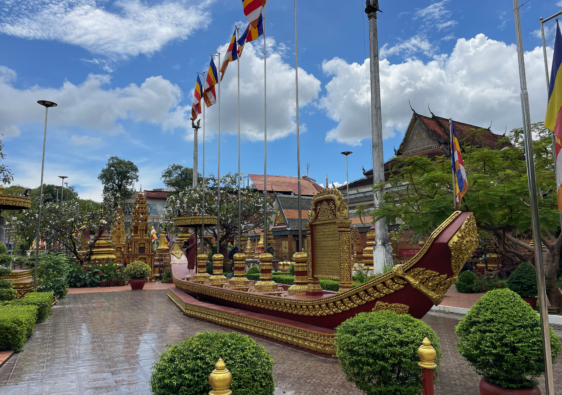Angkor: A Journey to the Heart of the Khmer Empire
Angkor Wat is one of the most iconic landmarks in the world, and for good reason. This awe-inspiring temple complex, located in Siem Reap, Cambodia, is the largest religious monument in the world and a testament to the power and ingenuity of the Khmer Empire.
The Khmer Empire ruled much of mainland Southeast Asia from 802 to 1431 with Angkor Wat as its capital. Hinduism was the dominant religion for much of the empire’s existence, with a gradual shift to Buddhism occurring in the last couple of centuries. You’ll be able to see the influence of both religions on the Angkor temples.
The Khmer temples are built in a variety of styles, but they all share some common features: they’re typically made of sandstone or brick, and they are decorated with intricate carvings of gods, goddesses, and other mythical creatures. The temples are also surrounded by moats and walls, which were used to protect them from invaders.
This post will go over everything you should know before visiting the Angkor Archeological Park, including the best temples to visit, ticketing options, and how to get around!
Please note that some of the links below may be affiliate links, and at no additional cost to you, we earn a commission if you make a purchase.

The Temples
Angkor Wat
Angkor Wat is a 12th-century Mahayana Buddhist temple complex in Cambodia and is the world’s largest religious monument. The temple was originally built as a Hindu temple dedicated to the god Vishnu, though it eventually transformed into a Buddhist temple. Today, it is a UNESCO World Heritage Site and one of the most popular tourist destinations in Southeast Asia. As such, prepare for the crowds when you visit this temple. It’s definitely a must-visit spot (you can’t come to Siem Reap and NOT see Angkor Wat), but it wasn’t our favorite just because of how crowded it was. Also, make sure you wear sunscreen and bring water because it’s a bit of a walk to the temple from the parking area and much of it is in the sun.
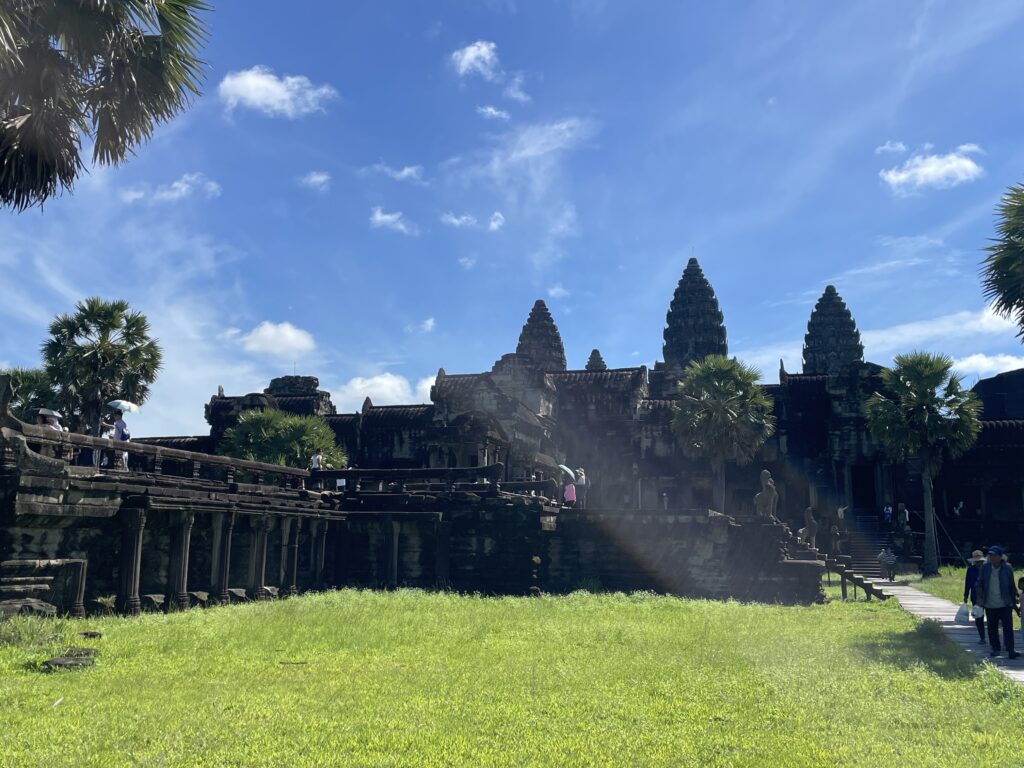
Bayon Temple
Bayon Temple is located in the Angkor Thom complex, which is just north of Angkor Wat. This temple is one of the most iconic in Angkor, known for its 216 giant stone faces carved into its towers. This was the second temple we visited, and we were thrilled to find this temple much less crowded than Angkor Wat (but still fairly busy). We enjoyed this temple; it’s huge and there’s a lot to explore!
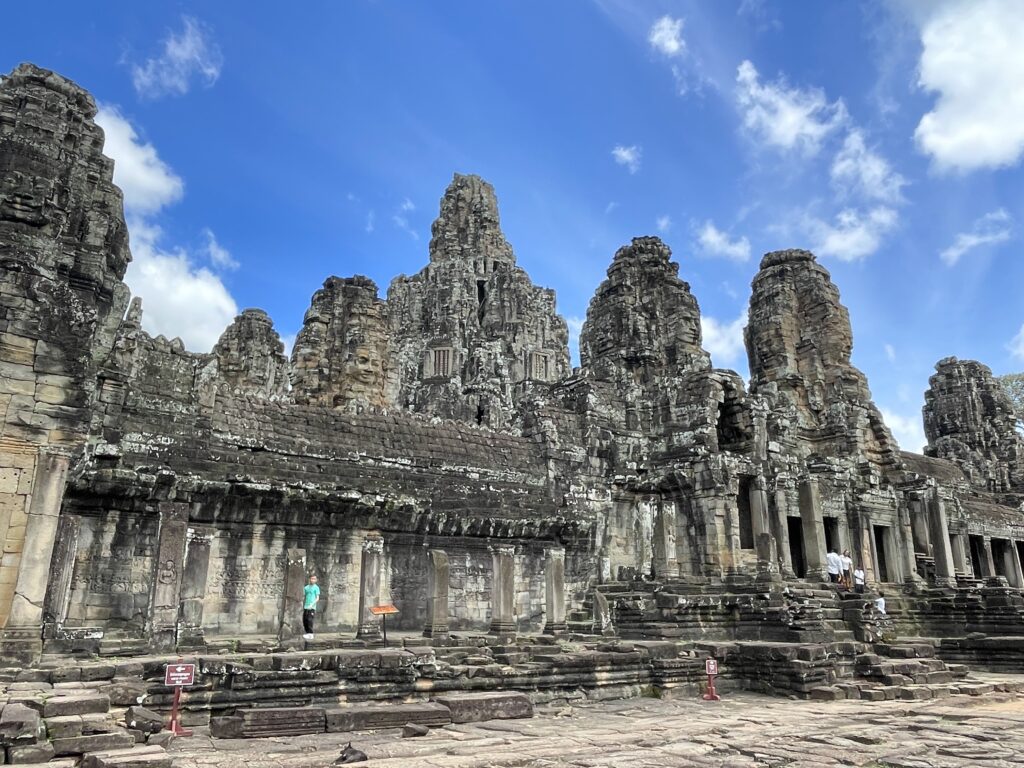
Angkor Thon Grounds
The Angkor Thon complex is massive and contains tons of smaller temples in addition to the larger Bayon temple that sits in its center. When you visit Bayon, make sure that you spend some time wandering the surrounding area – it’s beautiful and there are tons of ruins to discover. It’s also a less crowded area, which makes the experience a very peaceful one.
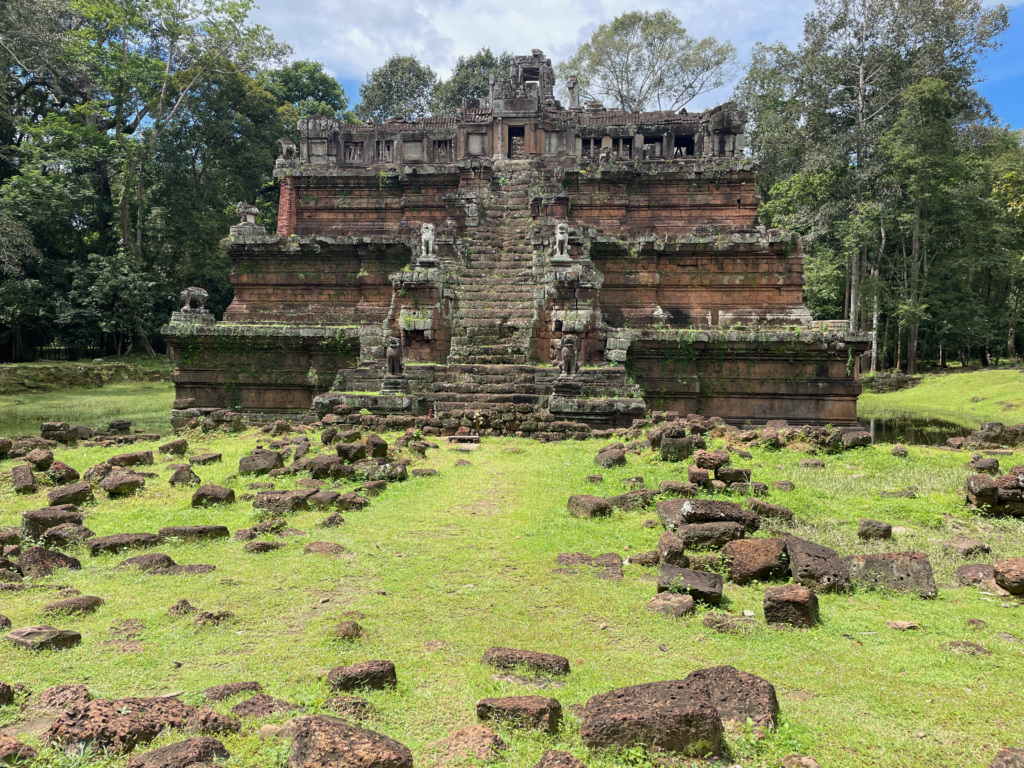
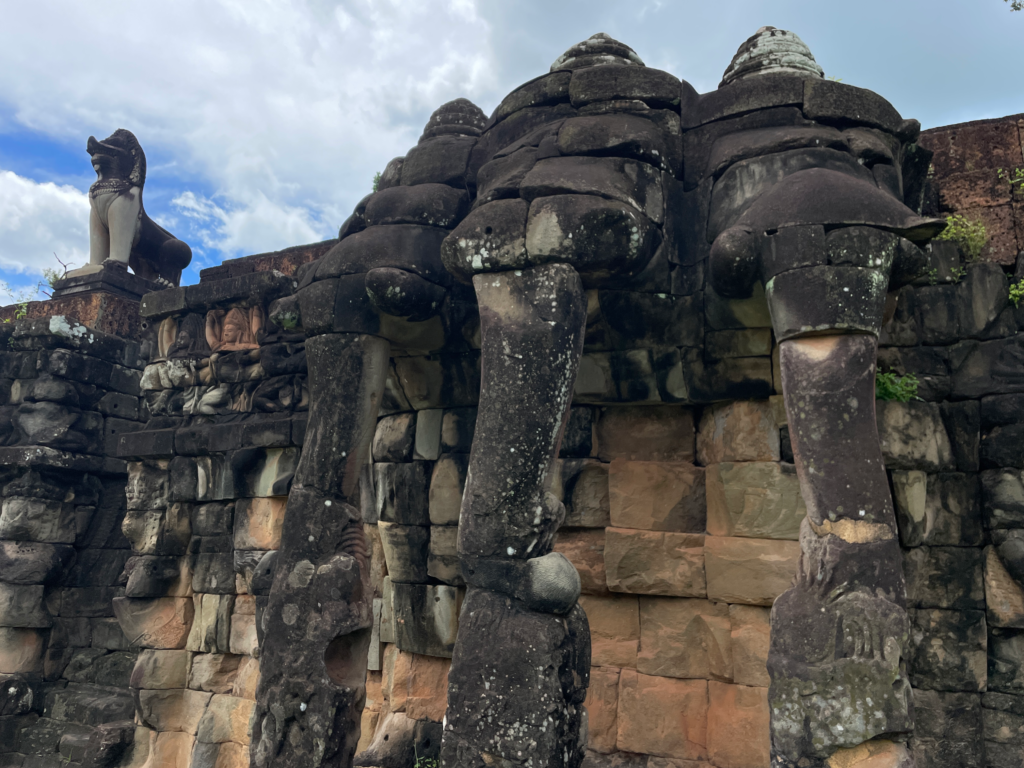
Ta Keo
Ta Keo is one of the tallest temples in Angkor, built in a stepped pyramid style with five levels. The top level of the pyramid is surrounded by a series of five sanctuaries. However, the sanctuaries were never completed, and the temple remains unfinished to this day. We really enjoyed our time at Ta Keo, as it was one of the less crowded temples we visited. Do note that the steps here are quite steep, so be careful if you decide to make the climb up to the top!
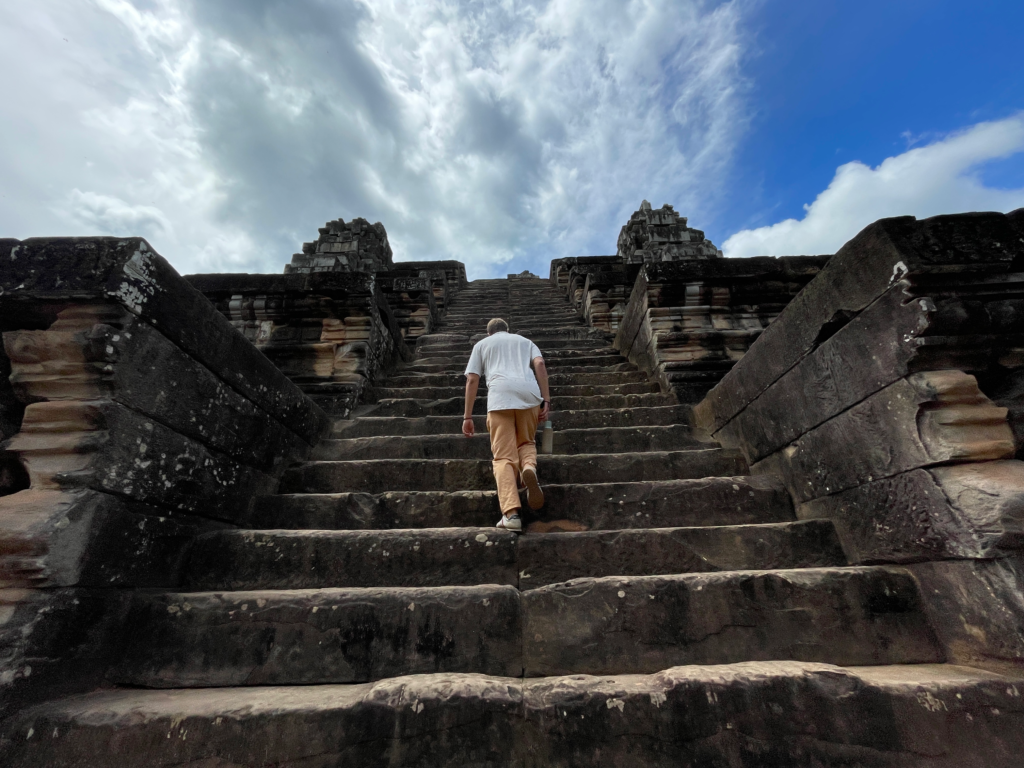
Ta Prohm
Ta Prohm was easily my favorite temple that we visited. This temple has been largely left unrestored, which has resulted in it becoming overgrown with trees and vines. The temple is covered in green, which makes it all the more spectacular to behold. Unsurprisingly, this also makes it one of the most popular temples; we found it to be the second most crowded of the temples we visited after Angkor Wat. However, this didn’t take away from its charm – there were certainly areas to explore away from the crowds.
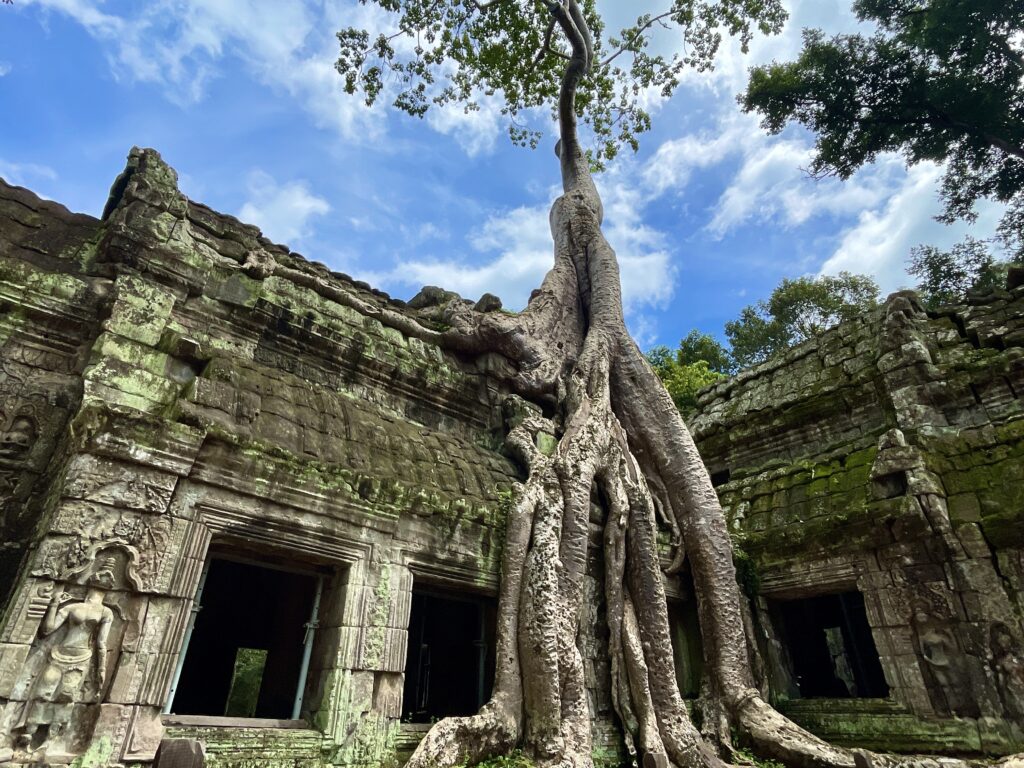
Banteay Kdei
Banteay Kdei is a beautiful and atmospheric temple, and a great temple to visit to get away from the crowds. This temple is on the smaller side, but there’s still lots to explore. When we visited, it felt like we had the whole temple to ourselves, which made it a very peaceful experience.

How to Visit
Ticket Options
When purchasing your ticket, you’ll have the option of buying a 1, 3, or 7 day pass, which cost $37, $62, or $72, respectively. If you have the time, the 3 day pass would probably be the best option, as that gives you a day to do the small circuit, one day to do the grand circuit, and a third day on which you could venture farther away to see other temples. On the map below, you can see the small circuit in red and the grand circuit in green.
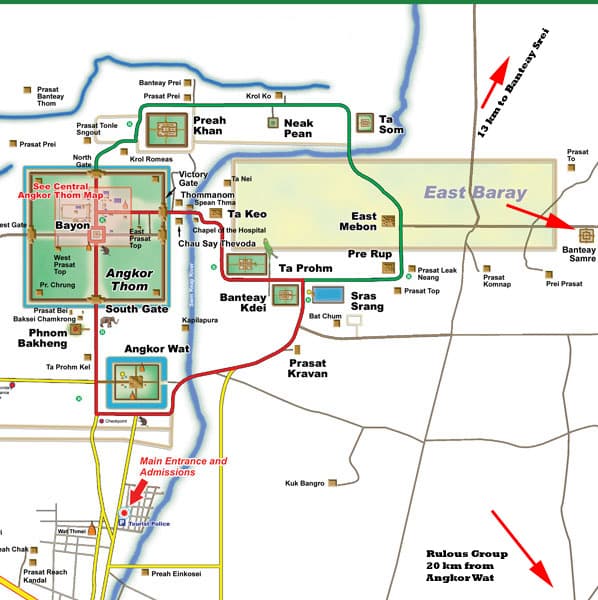
We personally only had one day and chose to do the small circuit – it hit all the major spots and we felt that we had seen a good amount after our one day.
Where to Get Your Tickets
There are two options to get tickets: you can buy in person at the Angkor Ticket Office (run by Angkor Enterprise) or you can buy it online. We bought ours online after hearing that the line can be quite long, which allowed us to head straight into the park after getting picked up at our hotel.
What to Wear
When visiting Angkor Archaeological Park, you’ll want to dress modestly with your shoulders and knees covered. When we visited it was very hot, so I wore a long skirt and a tank top, and covered my shoulders with a scarf I’d bought in town when we were in the temples.
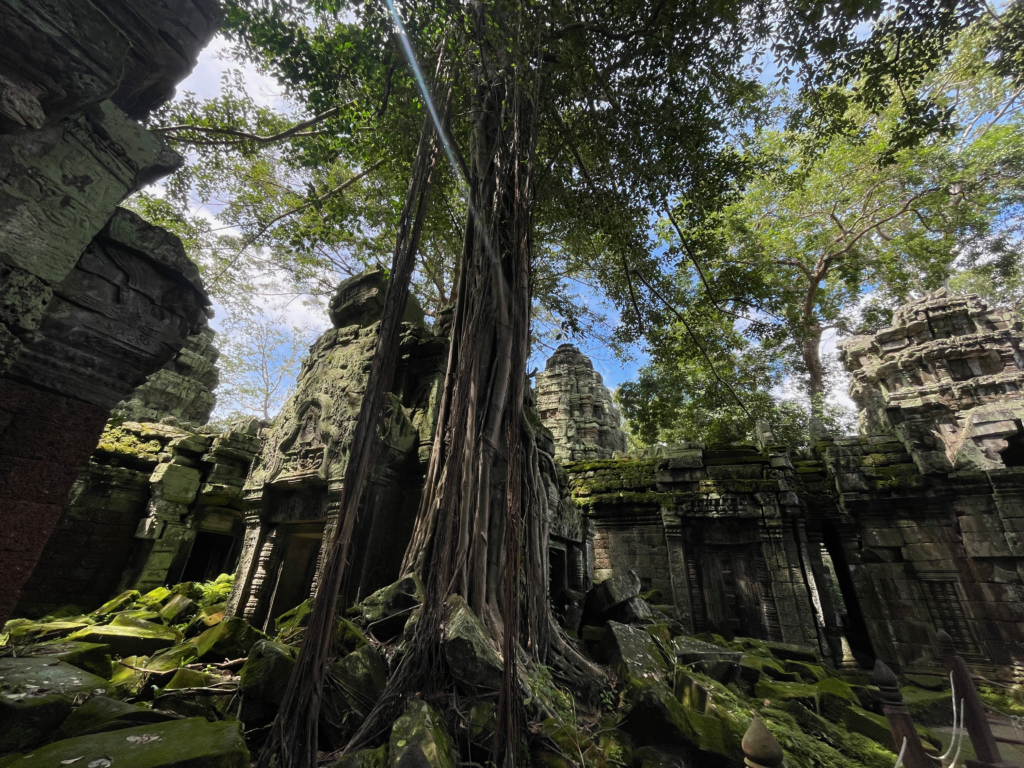
How to Get Around Angkor Wat
Tuk Tuk Driver
To get around the complex, you’ll definitely need a driver because it would be be impossible to walk from temple to temple. The most basic option is to have a tuk tuk driver who drops you at each temple and gives you however much time you want to explore. We did this with just the two of us and paid $20 for the day to do the small circuit. If you go with a bigger group, this will be cheaper.
Tour Options
We definitely urge you to get a tour guide when exploring Angkor Wat to learn about the history of these amazing temples. We didn’t do this while we were there in an attempt to save money, but after looking at just how cheap these tours can be, we definitely regret it. There are tons of tour options to explore Angkor Wat from Siem Reap; you’ll absolutely be able to find what you’re looking for regardless of your price range. Here are some options:
- For people who want to see everything, this Two Day Angkor Wat Tour is perfect. This tour includes the small circuit, big circuit, and Banteay Srei (a beautiful temple built from pink sandstone).
- For those on a budget, this small group 19 USD Full-Day Angkor Wat Sunrise Tour is a no-brainer. We wish we had done this when we were there to experience the sunrise and learn more about the history of this area.
- If the above sounds good to you but you’d rather have a private tour, check out this Private One Day Angkor Wat Sunrise Tour or this Private One Day Angkor Wat Sunset Tour.
- If you enjoy exploring new places in a unique and active way, check out this Angkor Wat Sunrise Bike Tour.
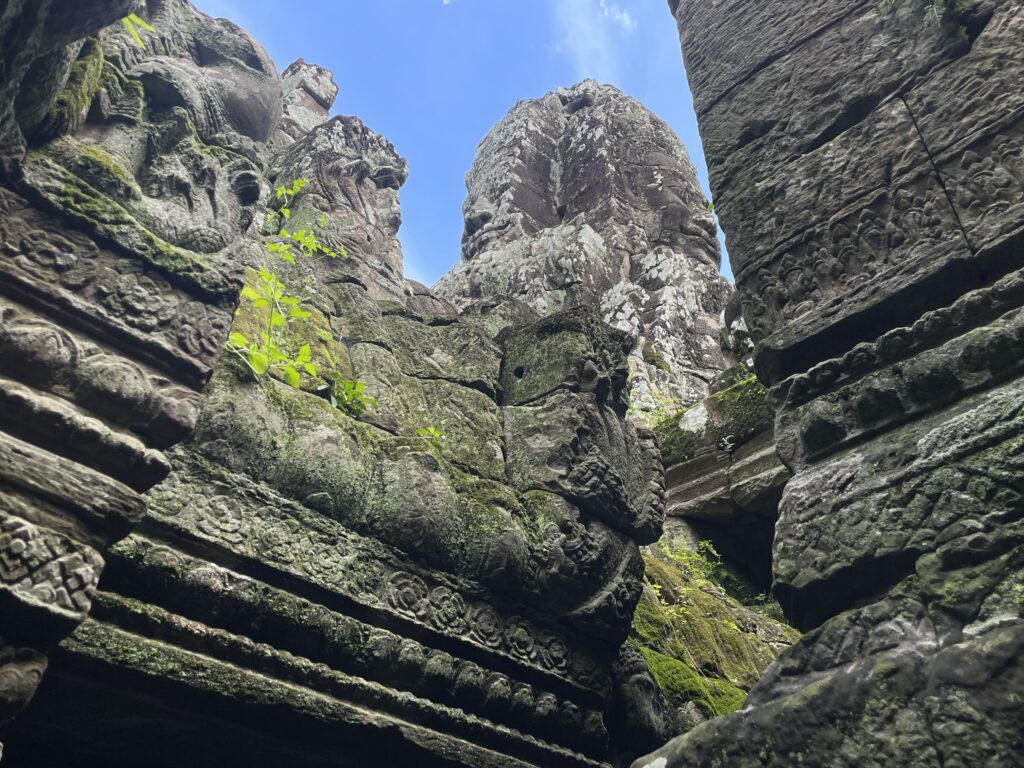
Best Time to Visit Angkor Wat
Cambodia’s rainy season starts in early or mid May and lasts through October, so the best time to visit Angkor Wat is from November to April. We went in mid-October, and it rained lightly pretty much every day for an hour or so. Though this can be annoying if you’re trying to fit a lot into your days, we recommend visiting during the shoulder months of October and May to try to avoid the heavy crowds.
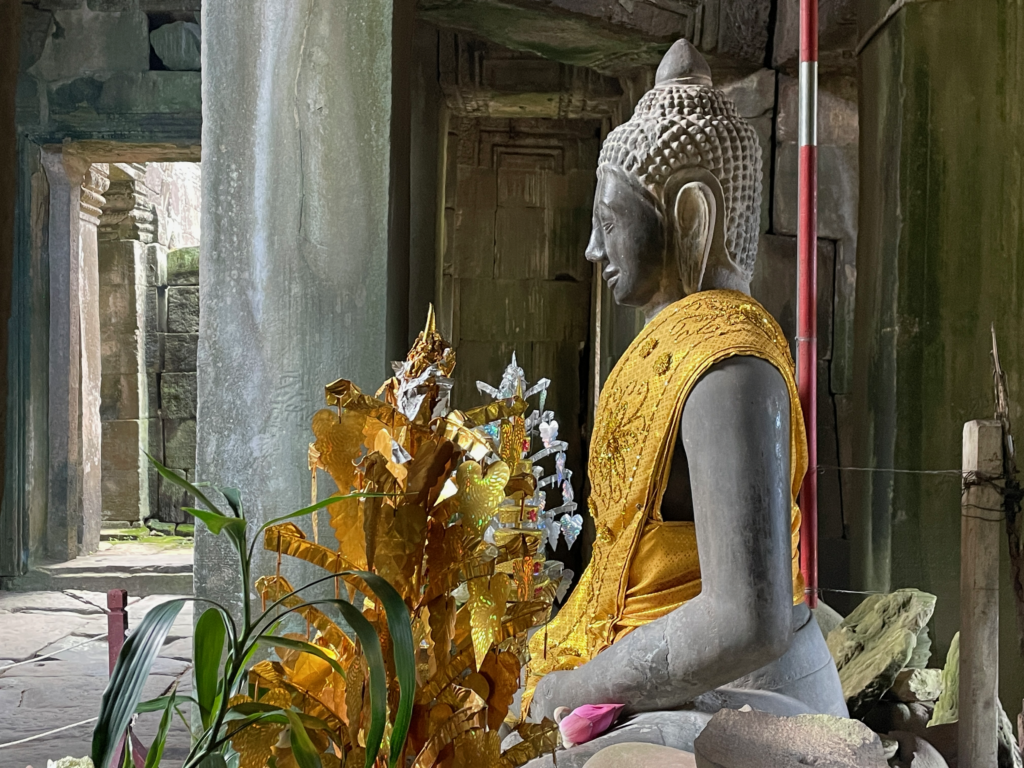
Where to Stay When Visiting Angkor Wat
The best place to stay when visiting Angkor Wat is in Siem Reap. This vibrant Cambodian city is a short tuk tuk ride from the Angkor Wat complex. There’s also a ton of great things to do in the city, so you’ll have lots to do on the rest of your vacation days!
Check out the best things to do in Siem Reap!
How to Get to Angkor Wat
To get to Angkor Wat, you’ll first need to get to Siem Reap, which will then be your base for exploring the temples.
How to Get to Siem Reap by Plane
Siem Reap’s new airport (SAI) is the closest airport to Angkor Wat, with direct flights from various cities in Southeast Asia and some major hubs worldwide. From the airport, you can take a taxi, tuk-tuk, or ride-sharing service to reach your hotel in Siem Reap.
Book your Cheap Flight with Skyscanner
How to Get to Siem Reap by Bus
Siem Reap is well-connected by bus to other major cities in Cambodia, Thailand, Vietnam, and Laos. Taking a bus can be a budget-friendly option, but the journey times can be longer compared to flying.
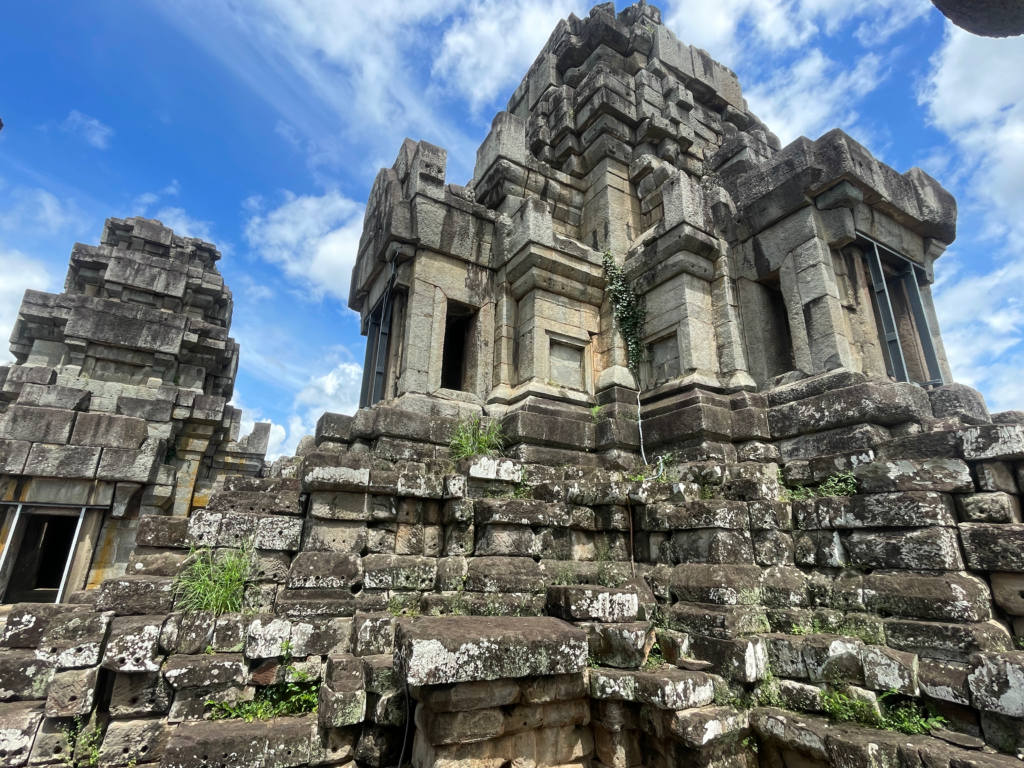
Keep Exploring Cambodia….
Traveling Southeast Asia? Check Out These All-Inclusive Trips
- Southeast Asia Highlights: 18 days including Thailand, Laos, Vietnam, and Cambodia
- Exploring Thailand: 15 days including the cultural north and islands of the south
- Laos to Northern Thailand: 14 days of culture, trekking, and delicious food
- Discover Cambodia: 9 days including Ho Chi Minh City, Cambodia, and Bangkok
- 8 Days in Southern Thailand: Koh Samui, Khao Sok, Krabi and Bangkok
- Indonesia Highlights: 22 days including Java, Bali and Lombok
- Vietnam Highlights: 11 days including Hanoi, Ha Long Bay, Ho Chi Minh City, Hoi An, & More!
- Jungle Hikes and Island Nights: 14 days including South Thailand, Malaysia, and Singapore
- Wanderlust Sailing: 7 days sailing through South Thailand
Our Favorite Travel Resources
Accommodations: We use Booking.com for hotels and HostelWorld for hostels. We also use VRBO or TrustedHousesitters for longer stays.
Flights: We recommend using Skyscanner to find the cheapest and best flights.
Ground Transport: We use 12Go and Omio for buses and private transfers, and rentalcars.com and Discover Cars for rental cars.
Activities: GetYourGuide and Viator are the best websites for booking organized tours.
International Medical Insurance: We highly recommend SafetyWing for Digital Nomads and HeyMondo for those not traveling full-time, or who frequently engage in higher-risk adventure activities.
eSIM: We recommend Airalo or Holafly for getting data internationally.
Check out our Travel Resources Page for more of our favorite travel-related products and services!

